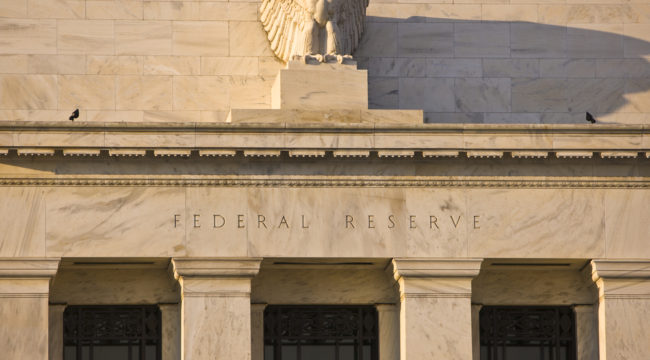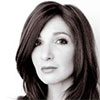Expect the Fed to Pause if Volatility Continues
It’s a good thing October is coming to an end. It’s been a particularly lousy month for the markets. October has seen about $5 trillion in value erased from global markets.
Reasons for that sell-off range from fear over Fed rate hikes, trade wars, elections and buyback “blackout” periods during earnings.
Buyback blackouts are ending, which should provide markets some needed lift over the next month. Buybacks have been one of the primary reasons markets have risen this year.
But other areas will keep the level of volatility high into the year-end. The upcoming elections, for example, could reshape Congress. If there is a turnover from Republicans to Democrats, legislation that relates to tax policy, financial regulations and international relations could be stalled or reversed.
Externally, we’re facing global volatility factors that include increasing uncertainty over what Brexit will look like and how it will impact the European economy. The new election of a Trump-like populist figure in Brazil could have ramifications for trade in the Americas and Asia. Emerging-market countries are also seeing their currencies falter against the dollar.
Volatility is nothing new. It’s how you deal with it that matters.
In early 2016, just after the Fed first raised rates in December 2015 after eight years of zero interest rate policy, the markets took a nosedive. As a result, the Fed put the brakes on hiking rates for an entire year.
Meanwhile, the European Central Bank (ECB) and the Bank of Japan (BOJ) ramped up their asset-buying programs, which provided stimulus to the financial markets.
All of that led to calmer markets. Investors believed easy money would continue. That’s why we saw the Dow Jones industrial average rise over 60% through this September from where it was in January 2016.
But now the markets have fallen out of bed.
Some economists at Deutsche Bank agree that “unless the markets regain their footing soon, the pressure for the Federal Reserve to reassess their monetary policy will continue to mount.”
The Fed has, for now, forecast another hike coming in December and more next year.
I think the Fed will hold off on a December rate hike as well. Last week, the Fed already tempered some of its “hot economy” rhetoric. It said, “wages and prices are rising in its 12 districts and overall economic activity expanded at a “modest to moderate” pace.”
Some analysts interpreted this as an open invitation for a December Fed rate hike. But there’s reason to believe the opposite.
It’s not an especially glowing statement about wages or prices rising. Plus, GDP only grew 3.5% in the third quarter compared to 4.2% in the second, a slowdown I warned would happen. And if you look behind the numbers, growth may have been even weaker than indicated. That gives the Fed another reason to slow down its tightening pace.
Current Fed leaders know that tightening too much too quickly could result in significant market drops and credit crunches.
Last Friday, not one, but two Federal Reserve officials noted that the Fed “won’t raise short-term rates without taking economic conditions into account.”
It’s worth noting, and is likely not coincidental, that they made those statements right after GDP growth came in lower for the third quarter versus the second quarter.
First, Cleveland Fed President Loretta Mester told CNBC that you could think of the Fed as “a hiker.” She went on to say that, “We’re going to be using what the economy is telling us, and the data that comes in, to inform our outlook and that is going to determine” the hiking path.
She stressed, and agreed with me, that “the economy is slowing and that was maybe why stocks have been volatile.” Although she doesn’t see the slowdown as a serious problem right now, she “still expects to see growth around a 2.75% annual rate in 2019.”
That’s a far cry from the 4.2% GDP growth that was reported for the second quarter of this year. And well below the 3.5% third-quarter figure that just came in.
Another Fed official, Dallas Fed President Robert Kaplan, told Bloomberg much the same. He noted that the Fed would not be “rigid or predetermined.”
But it’s not just Mester and Kaplan that are raising the warning flags.
The Fed’s vice chair for supervision, Randal Quarles, recently said that uncertainty calls for gradual U.S. rate hikes. Consider the term gradual. You should interpret it as an indicator that if something changes dramatically in economic growth forecasts or other geopolitical factors, the Fed could act by slowing down on rate hikes and its quantitative tightening (QT) plan.
And then we come to the Fed chairman himself.
In a recent interview with The Atlantic at an event in Washington, D.C., Fed Chair Jerome Powell seemed to back off the tightening language. “Powell said he sees the rates as a balance between the Fed trying to avoid suffocating growth and to maintain its tools for future use,” The Atlantic reports, adding:
“He said he thinks the Fed is striking that balance now, and the positive indicators in the economy suggest it’s working. But that doesn’t mean he feels totally safe about the economy.”
You should take this synopsis as a signal that the Fed will be treading very carefully in December.
It means the Fed is watching slowing growth and market volatility carefully. Again, I expect the Fed to hold off on a December rate hike.
The next meeting is set for Dec. 18–19. That’s still almost two months away. If conditions continue to deteriorate, the Fed could well hold off on another rate hike this year.
If that is the case, it could lead to an end-of-year surge in the market and a collective sigh of relief that central banks still have the financial markets’ backs.
Across the Atlantic, the European Central Bank (ECB) left benchmark interest rates unchanged last week. It also confirmed that it would keep on with its plan to end growing its quantitative easing (QE) program by the end of 2018.
But in a statement, the ECB added language which gave it room to maneuver, or to extend its QE program just a little bit longer if it deems necessary. It said, “subject to incoming data confirming the medium-term inflation outlook, net purchases will then end.”
That signals to me that the ECB is going to watch both the stock and bond markets in Europe, as well as slowing global growth, before it truly ends its QE program. And even then, it’ll be a while before it sells off any of its massive book of assets.
This emerges at a time when European corporate bonds and government bonds in some Southern European countries are having serious problems.
Right now, with pressure mounting in Italy and worries growing about historically high debt levels, the ECB could unleash a credit crisis — especially if it stops QE in a period of market volatility.
That’s why, like the Fed in the U.S., the ECB is more likely to push off any such shift in policy into the new year. That means you should expect a potential bond market pop in Europe in December.
The bottom line is, don’t expect central banks to abandon the markets if things continue to go downhill. The game can’t go on forever. But it’s the only game they know how to play.
Regards,
Nomi Prins
for TheDaily Reckoning



Comments: